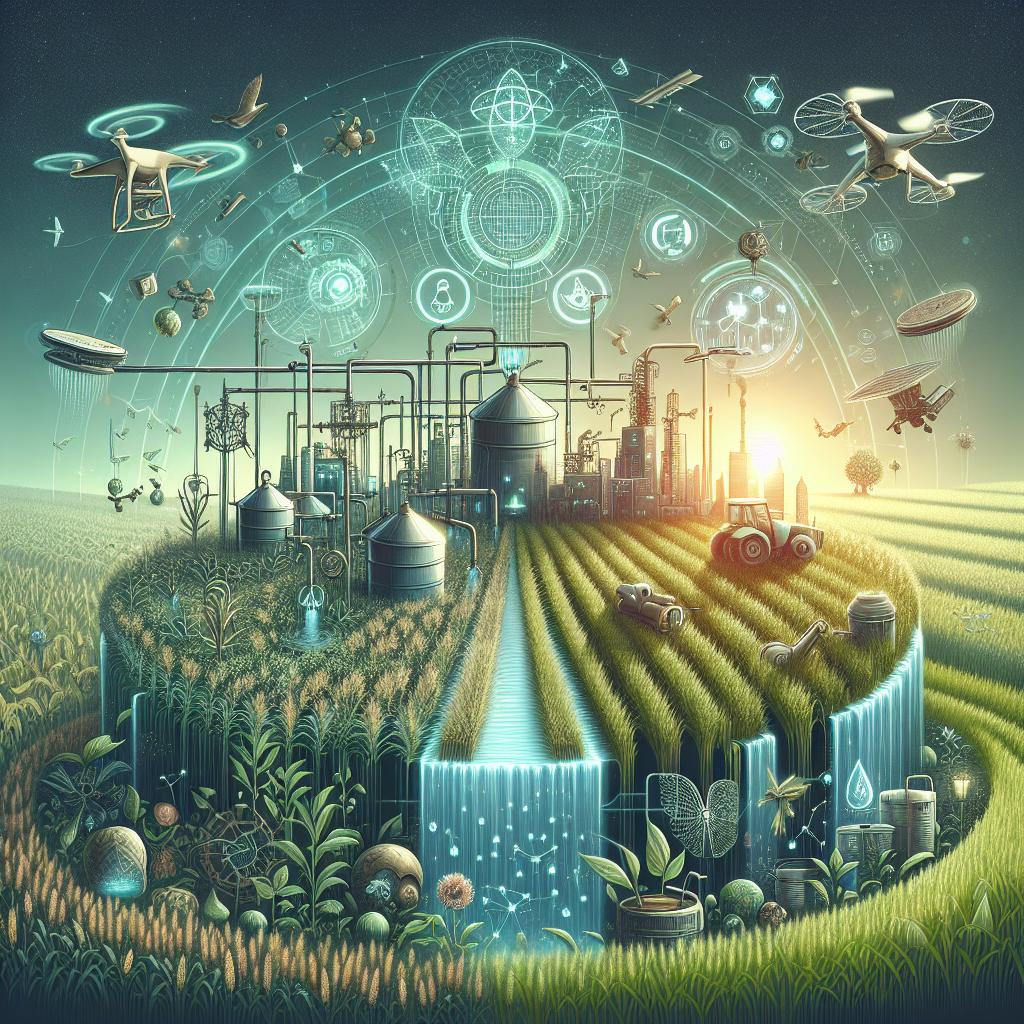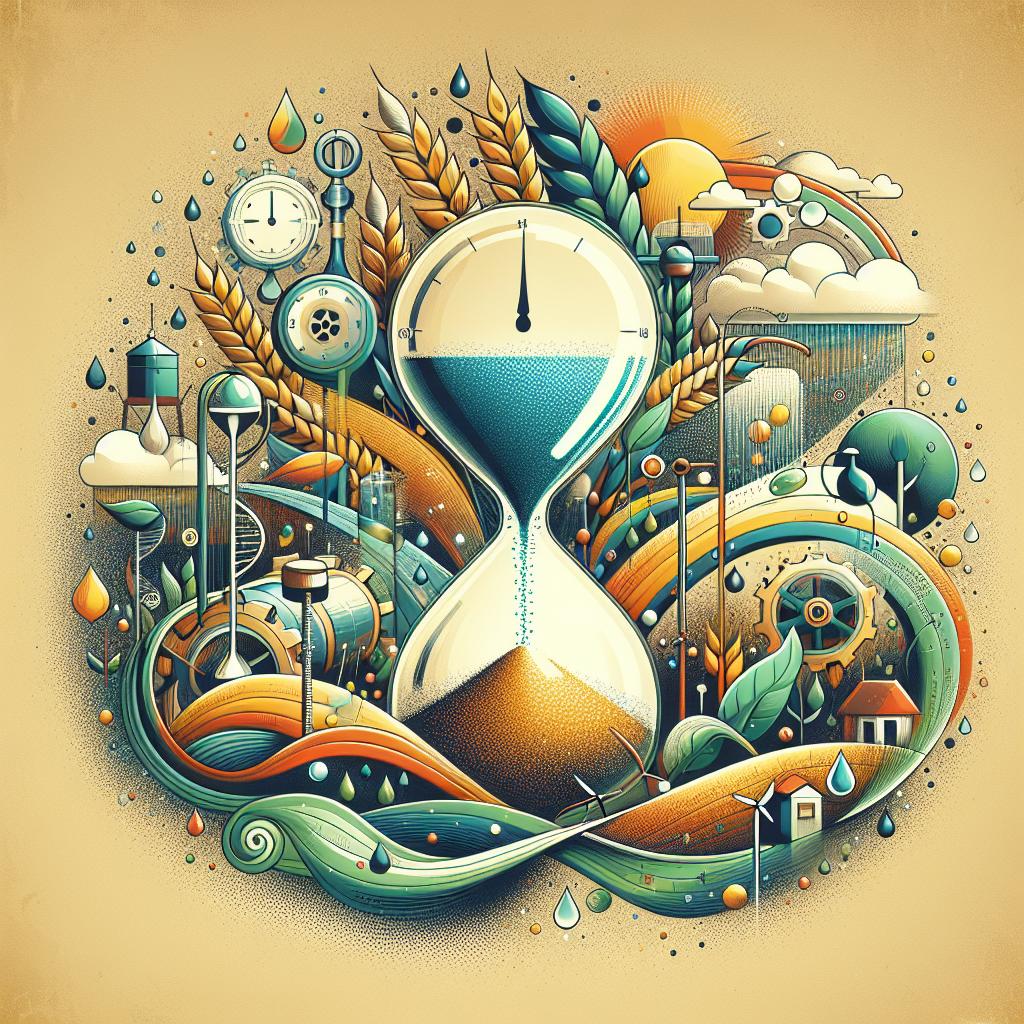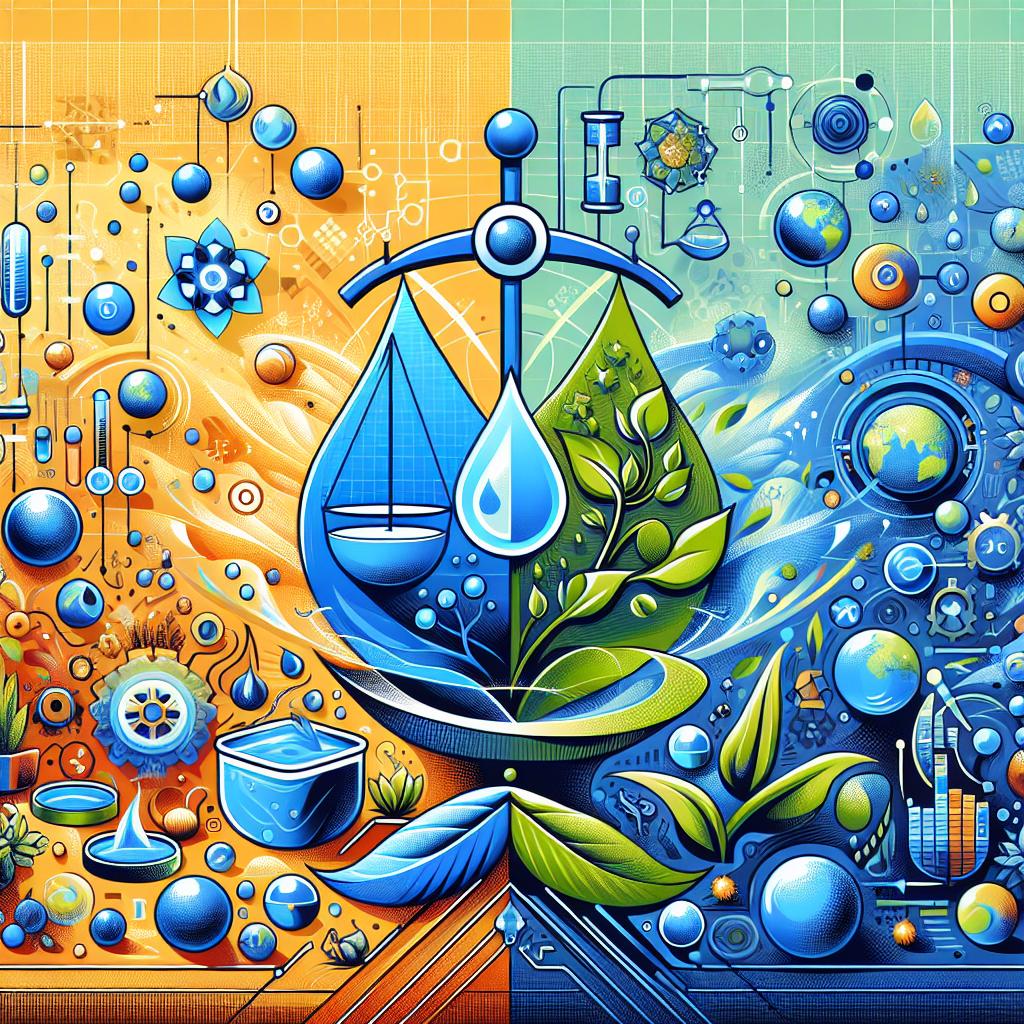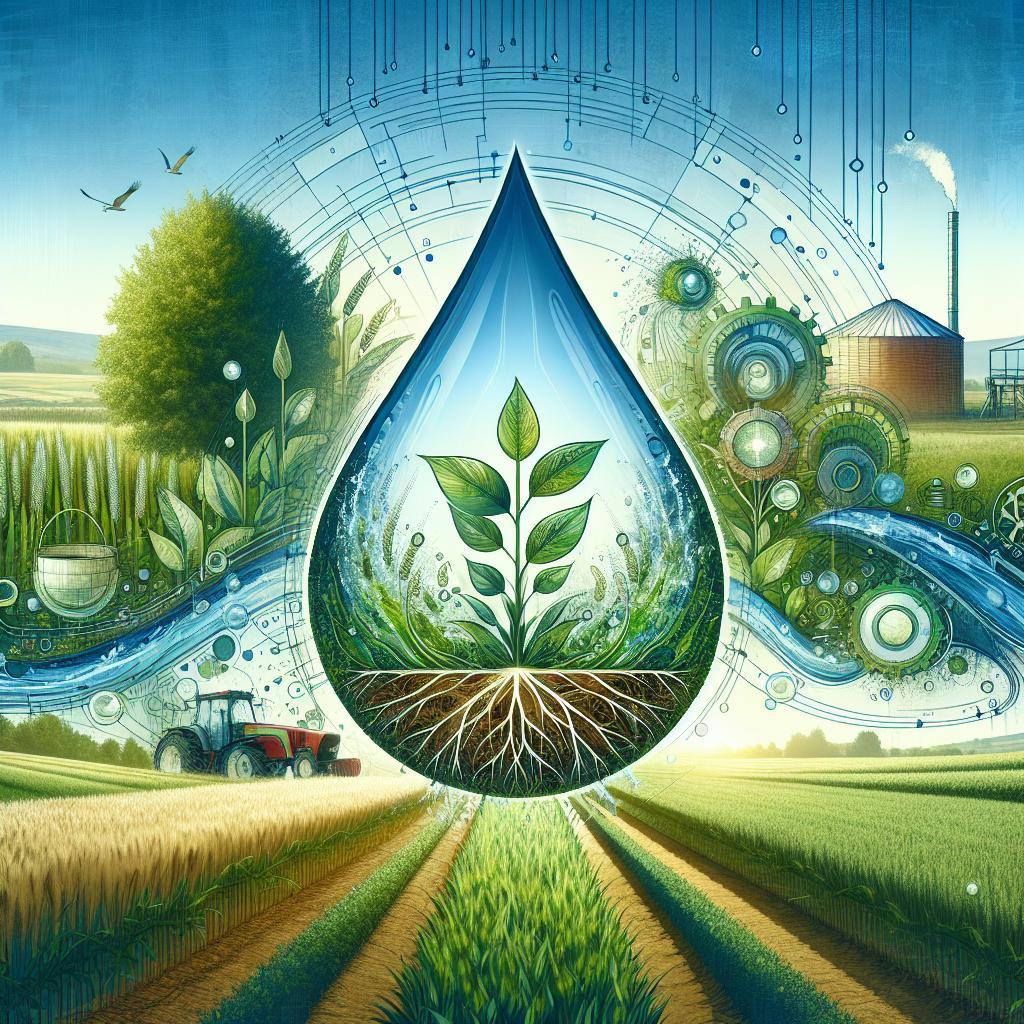This post may contain affiliate links which means I may receive a commission for purchases made through links. Learn more on my Private Policy page.
Understanding the Role of Irrigation in Maximizing Forage production
Imagine strolling through a lush, green pasture, where the vibrant hues of clover and alfalfa stretch as far as the eye can see.In this serene landscape, you might pause to ponder how such thriving forage crops come to life. The answer lies beneath the surface, in a world where water works its magic. Welcome to our exploration of irrigation—the unsung hero of forage production. In this friendly journey, we’ll uncover how effective irrigation practices can transform humble grasslands into flourishing fields, nourishing livestock and ensuring sustainable farming. So grab your watering can (or maybe just a cup of coffee), and let’s dive into the essential role of irrigation in maximizing forage potential!
Exploring the Fundamentals of Irrigation in Forage Management
Irrigation is a crucial component of effective forage management, acting as an essential support system for growth and productivity. When well-planned, it ensures that plants receive the optimal amount of moisture needed for photosynthesis and nutrient uptake. Beyond just supplying water, irrigation can help control soil erosion, enhance seed germination, and promote root progress. Here are some fundamental aspects to consider:
- Watering Techniques: Various methods such as drip, sprinkler, and surface irrigation can be tailored to specific forage types and soil conditions.
- Timing: Understanding the right time to irrigate, particularly during critical growth stages, maximizes efficiency and minimizes water waste.
- Soil Management: Healthy soils retain moisture better; practices such as mulching can enhance soil structure and moisture retention.
Furthermore, proper irrigation management can vastly improve forage yields, directly impacting livestock productivity. Implementing strategies such as scheduling irrigation based on local weather patterns and using soil moisture sensors can led to optimized water use. An vital element to consider is the balance between water availability and the nutritive quality of forage produced. The following table outlines some common forage types and their irrigation needs:
| Forage Type | Water Requirement (inches/week) | Best Irrigation Method |
|---|---|---|
| Alfalfa | 1.5 – 2.0 | drip/Sprinkler |
| Timothy Grass | 1.0 – 1.5 | Surface/Sprinkler |
| Orchard Grass | 1.0 – 1.5 | Sprinkler |

Choosing the Right Irrigation Techniques for Optimal Growth
When it comes to maximizing forage production, selecting the appropriate irrigation technique is crucial. different methods cater to various landscapes, plant types, and climate conditions. Drip irrigation, such as, is a highly efficient choice for targeted watering, minimizing water waste while delivering moisture directly to the roots. Conversely,sprinkler systems offer versatility and coverage for larger areas,making them suitable for diverse forage species. Considering factors such as soil type, water availability, and crop needs can definitely help in making an informed decision on the right irrigation technique.
To ensure optimal growth of forage crops, it is essential to implement a system that balances efficiency with crop health. Surface irrigation can work well for flat terrains, promoting even distribution of water and nutrients. Optimizing irrigation scheduling is also vital; monitoring weather patterns and soil moisture levels can aid in determining the best times to irrigate. Here’s a brief comparison of irrigation techniques to consider:
| Method | Advantages | Considerations |
|---|---|---|
| Drip Irrigation |
|
|
| Sprinkler Systems |
|
|
| Surface Irrigation |
|
|

Seasonal Strategies: timing Your Irrigation for Maximum Yield
To optimize forage production through effective irrigation, it’s crucial to align your watering schedule with the seasonal conditions that influence plant growth. different stages of plant development require varying amounts of moisture, making it essential to monitor factors such as precipitation patterns, temperature fluctuations, and soil moisture levels. By using a combination of weather forecasting and soil moisture sensors,you can determine the ideal times to irrigate,enhancing the overall efficiency of your water submission.
Incorporating a well-planned irrigation strategy into your agricultural routine can yield significant benefits. Consider thes key points for maximizing your forage yield:
- Early Spring Irrigation: Initiate watering soon after the last frost to kickstart growth.
- Mid-Summer Monitoring: Pay attention to signs of stress in plants, as this is often the driest period.
- late Season Adjustments: Reduce watering as plants mature, preparing them for harvest.
| Season | Irrigation Focus | Key Activities |
|---|---|---|
| Spring | Establishment | Early watering, seedbed preparation |
| Summer | Maintenance | Monitor moisture, adjust irrigation frequency |
| Fall | Preparation | Reduce irrigation, prep for winter |

Sustainable Practices: Balancing Water use and Forage Health
In today’s agricultural landscape, the efficient use of water resources is paramount to fostering healthy forage systems. Implementing sustainable irrigation practices not only conserves water but also supports the vitality of forage plants. By adopting techniques such as drip irrigation, farmers can deliver precise amounts of moisture directly to the root zones, minimizing evaporation and runoff. This targeted approach ensures that grasses and legumes receive the necessary hydration without overwhelming the soil, promoting robust growth and improving soil quality.
Furthermore, practicing crop rotation and selecting drought-tolerant forage species can considerably contribute to ecological balance. Farmers should consider the following strategies to enhance water efficiency:
- Mulching: Reduces evaporation and suppresses weeds.
- Rainwater Harvesting: captures and utilizes natural rainfall.
- No-Till Farming: Preserves soil structure and moisture.
- Soil Moisture Monitoring: Allows for informed irrigation decisions.
For effective planning, farmers could utilize a systematic approach to evaluate the interplay of water use and forage health. Below is a simplified table that contrasts common irrigation methods with their corresponding impact on forage quality:
| Irrigation Method | Impact on Forage Quality |
|---|---|
| Surface Irrigation | Variable moisture levels; potential waterlogging |
| Sprinkler Irrigation | Uniform water distribution; better forage yields |
| Drip Irrigation | Optimized root moisture; improved nutrient uptake |
| Subsurface Irrigation | Minimized surface evaporation; consistent hydration |
By understanding these relationships and applying innovative practices, farmers can achieve a delicate balance between water use and forage health, ultimately leading to a more sustainable agricultural future.
In Summary
As we wrap up our exploration of the vital role irrigation plays in maximizing forage production, it’s clear that this age-old practice is more than just a means of watering crops—it’s a lifeline for farmers and ranchers alike. By harnessing the power of water, we can nurture lush pastures, promote healthy growth, and ultimately support our livestock and ecosystems.
So whether you’re a seasoned farmer, a budding agronomist, or simply a curious soul interested in the wonders of agriculture, remember: irrigation is not just about keeping plants alive; it’s about cultivating possibilities. As you walk through fields of vibrant green, take a moment to appreciate the intricate dance between water, soil, and sunlight. Embrace the innovations and techniques available to you, and let’s continue to work together toward a more sustainable and bountiful agricultural future.
Thank you for joining us on this journey of understanding! We hope you feel inspired to dig deeper into the world of irrigation and forage production. Until next time, happy farming and may your fields always flourish!
This post may contain affiliate links which means I may receive a commission for purchases made through links. Learn more on my Private Policy page.

